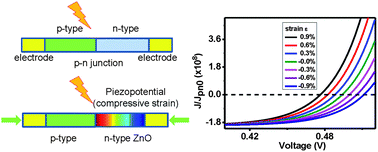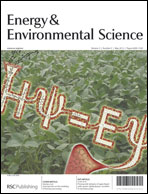Piezo-phototronics effect on nano/microwire solar cells
Abstract
Wurtzite structures, such as ZnO, GaN, InN and CdS, are piezoelectric semiconductor materials. A piezopotential is formed in the crystal by the piezoelectric charges created by applying a stress. The inner-crystal piezopotential can effectively tune/control the carrier separations and transport processes at the vicinity of a p–n junction or metal–semiconductor contact, which is called the piezo-phototronic effect. The presence of piezoelectric charges at the interface/junction can significantly affect the performances of photovoltaic devices, especially flexible and printed organic/inorganic solar cells fabricated using piezoelectric semiconductor nano/microwires. In this paper, the current–voltage characteristics of a solar cell have been studied theoretically and experimentally in the presence of the piezoelectric effect. The analytical results are obtained for a ZnO piezoelectric p–n junction solar cell under simplified conditions, which provide a basic physical picture for understanding the mechanism of the piezoelectric solar cell. Furthermore, the maximum output of the solar cell has been calculated numerically. Finally, the experimental results of organic solar cells support our theoretical model. Using the piezoelectric effect created by external stress, our study not only provides the first basic theoretical understanding about the piezo-phototronic effect on the characteristics of a solar cell but also assists the design for higher performance solar cells.


 Please wait while we load your content...
Please wait while we load your content...